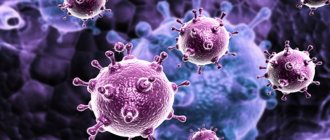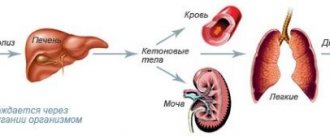What it is
The official name of the disease is dissociative identity disorder . This is a rare mental disorder when one personality is divided into several incomplete ones. From the outside it may seem that in one body there are different people who periodically “come out into the light.” The carrier of this disorder himself is sometimes unaware of the existence of other personalities.
It takes from a few seconds to a few minutes for one of the personalities to take control of behavior and thoughts. This moment is called "switching".
By immersing the carrier of the disease in a state of hypnosis, you can evoke different personalities and communicate with them.
Causes of split personality
The disease can appear due to serious trauma, both physical and psychological, the echoes of which haunt a person for a long period. Most often, such trauma appears in childhood. The simplest examples are physical, sexual or emotional abuse.
The main reason is childhood trauma.
A new personality appears when a person separates himself from a too harsh, traumatic situation.
Interesting fact: Separate personalities are characterized by special postures, gestures and manner of communication. Each of them may have its own age, gender and even nationality.
Main symptoms of split personality
Along with the main symptom – the presence of other personalities – other psychological problems also appear:
- depression;
- mood swings;
- sleep disorders (insomnia, nightmares);
- worry and anxiety;
- problems with alcohol and drugs;
- unhealthy interest in mysticism;
- auditory and visual hallucinations.
Dissociative disorder often involves headaches, indigestion, amnesia, loss of time, and an out-of-body feeling.
Reasons for appearance
- Dissociative disorder can be temporary due to brain damage that occurs in accidents, fights, and other situations. A prolonged lack of proper sleep can also have an effect.
- An increased level of stress that the psyche is unable to cope with. Especially if it was long and intense. This happens when a person finds himself in abnormal conditions, for example, in a war, or becomes a victim of a maniac or rapist. Also in case of being in the epicenter of natural disasters, catastrophes and terrorist attacks.
- Lack of attention and love in infancy. The newborn experiences severe anxiety because he does not feel safe, his needs are not met, and all this provokes the emergence of mental illnesses, including splitting into several personalities.
- With strong immersion, merging, which occurs while watching a movie or reading a book. Then the fictional turns into the real, as if the boundaries are erased, and a person is no longer able to distinguish what is his life and what is just a game.
- Sometimes it occurs after surgery, in particular anesthesia. For example, after obtaining nitric oxide, which is administered during dental operations.
- Genetic disposition.
- Religious sects and fanatical beliefs also lead to a similar disease.
How is split personality different from schizophrenia?
Schizophrenia and dissociative identity disorder are often confused, but they are not the same thing .
Schizophrenia is a serious mental illness associated with chronic (or recurrent) psychosis, a distortion of thinking characterized primarily by auditory and visual hallucinations.
Contrary to popular misconceptions, people with schizophrenia do not have multiple personalities, although they may communicate through hallucinations.
Differences between dual personality and schizophrenia
Treatment
The treatment process usually takes a lot of time, resources and effort. Sometimes it even lasts throughout life. But it is necessary to at least alleviate the patient’s suffering and reduce the intensity of symptoms. Treatment is prescribed only according to the doctor's decision. Below is background information for your reference.
Medication
- Neuroleptics. They help to slow down the disease a little, removing, for example, a manic state or hallucinations, delusions. Includes haloperedol, azaleptin and sonapax. They reduce anxiety, agitation, relax and help you sleep.
- Tranquilizers. It is strictly forbidden to use it other than as prescribed by a doctor, as in some cases it can only aggravate the condition. Especially if there is a tendency towards suicide.
- Antidepressants. They help when it is necessary to cope with apathy, depression, in the absence of desires, interests and, in general, energy. Non-medicinal, that is, psychotherapeutic treatment involves the use of:
Hypnosis
With its help, it is possible to achieve considerable results regarding the general condition of the patient, as his character changes and some symptoms disappear. But, at the same time, it is dangerous, since, on the contrary, it can provoke the emergence of new hypostases that will control and manage the unfortunate person.
Typically, hypnosis is used to reduce anxiety, create rapport between the patient and the therapist, and strengthen the position of the main alter ego.
Electroconvulsive therapy
It was originally invented and introduced to treat schizophrenia, and appeared in the 1930s. It was believed that the brain of a person with a mental disorder is not able to create certain impulses, which is why they should be created artificially.
It happens like this: several electrodes are attached to the head and a voltage is applied through them, not particularly high, so as to only affect the patient’s brain for a fraction of a second, and not damage it. Repeating it several times a week, over the course of a couple of months, doctors achieved quite positive results.
Psychotherapy
Moreover, both individually with the patient and in a group with his family. People around us sometimes do not keep track of how they contribute to the maintenance of mental illness, and addictions in general.
Therefore, it is necessary to correct their ways of treating each other and building relationships. But in individual therapy, it is important to help build your own clear beliefs, stereotypes, values, opinions, etc. Roughly speaking, return power to a person over his life.
What does a person with split personality feel like?
Living with one or more “passengers” is difficult, especially if such a person has not been diagnosed. In particular, you may encounter the following problems:
There are many more interesting things on our social networks
- Depersonalization . This is the feeling when your own actions are perceived as if from the outside.
- Derealization . This is the feeling that the world around us and what is happening around us is unreal.
- Amnesia . This is the inability to remember significant personal information that is so extensive that it cannot be attributed to simple forgetfulness. Microamnesia may also exist, where the discussion being discussed is not remembered.
- Identity confusion or identity change . They both involve confusion about who a person is. Example: a person has problems determining what interests him in life, what his political, religious or social views are.
In addition to this, the patient may experience problems with the sense of time and place.
How to Treat a Personality Disorder
To eliminate symptoms such as anxiety, panic, depression and others, drug treatment is undertaken. The drugs include psychotropic, neuroleptic drugs, serotonin inhibitors. Risperidone is used to prevent depersonalization.
Psychotherapy is aimed at correcting inappropriate symptoms, but it is worth remembering that the treatment will be long-term. The cognitive-behavioral method allows the patient to pay attention to his behavior, and not the consequences caused by his actions. The specialist can force the patient to obey his orders, for example, stop screaming, speak quietly, calmly, and control himself during attacks. Of no small importance is the participation of the patient’s relatives, who should also know the diagnosis of “personality disorder”, what it is, communicate with a specialist and develop a certain manner of behavior. Positive results can be expected after 5-6 months of constant exposure to the patient. The optimal treatment period is from 3 years.
How to remove a personality disorder diagnosis
In Russia, free medical and advisory assistance is provided to people with LC. There is no longer a record of patients with this diagnosis, as in past times. After appropriate treatment, patients undergo dynamic examination at the dispensary for some time, that is, they need to visit doctors for six months. People who want to get a job as a driver or security guard mainly seek to remove the diagnosis. If a patient does not visit a doctor for five years, then his card is transferred to the medical archive, from where it can be requested by law enforcement agencies, the human resources department, etc.
Removal of the diagnosis is possible after a successful treatment course
It is theoretically possible to remove the diagnosis only after 5 years, but only if the patient was under observation for a year and the doctor canceled the treatment therapy. To remove the diagnosis prematurely, it is necessary to go to a psychiatric clinic, undergo an examination, and obtain the approval of the commission. Some people with LC, feeling completely healthy, are confident in the positive decision of the doctors, but the latter, in turn, can draw the opposite conclusion.
Group of dissociative disorders
Multiple personality disorder (MPD), now defined as dissociative identity disorder, is considered the most severe form of the disease, having all the corresponding symptoms.
The following factors contribute to the emergence and exacerbation of forms of dissociation.
- endogenous predisposition to dissociation;
- recurrence of violent episodes noted in childhood;
- complete lack of psychological support in the presence of fairly severe bullying;
- negative impact from other family members with the same symptoms.
Diagnostics
The diagnosis of “multiple personality disorder” is based on whether the patient’s condition meets the following symptoms:
- The presence of two or more clearly distinguishable identities or personal states, each of which has its own worldview, attitudes towards reality, memory and model of the world.
- Each of the identities periodically replaces each other.
- The patient is unable to remember significant information about himself, and the nature of the forgetfulness does not allow it to be classified as ordinary.
- The condition did not occur under the influence of various types of narcotic and medicinal substances.
- It is also important not to confuse children’s games with an imaginary friend, when they are clearly aware of the absence of one in reality. In other words, it is worth taking into account that the child may simply be trying to attract attention.
Scientists say this is just a particular manifestation of a more general disorder. Research is subject to massive criticism: ignoring important features of the disease, poor-quality statistical base, inconclusive conclusions.
That is why it is recommended to use polyetiological diagnostic criteria - more flexible and implying various causes of origin, based on an endogenous basis. First of all, it is recommended to exclude the possibility of organic brain damage using special highly functional scanning techniques (various types of MRI).
Differential diagnosis
Differential diagnosis means excluding similar conditions of other etiologies:
- infectious diseases, brain tumors affecting predominantly the temporal lobe;
- delirium;
- schizophrenia;
- amnestic syndrome;
- temporal lobe epilepsy;
- mental retardation;
- drug use disorders;
- post-traumatic amnesia;
- dementia;
- somatosensory disorders;
- borderline personality disorders;
- bipolar disorder, characterized by rapid alternation of episodes;
- simulation.











